More about Shooting Picture
- All
- Info
- Shop
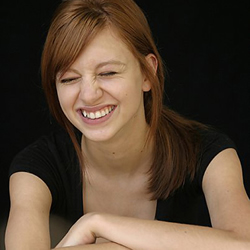
Sr. Editor
Shooting Picture by Niki de Saint Phalle represents the artist’s metaphorical destruction of the barrier between painting and sculpture, the impediments imposed upon Saint Phalle by her gender, and the trappings of post-war capitalist society.
Shooting Picture is one work in Saint Phalle’s 'Tirs' series, tirs meaning gunshot or fire in French. Part assemblage, part painting, and part performance, the Tirs pieces were created by attaching bags of paint to a canvas, covering the entire surface in plaster, and shooting the bags with a gun. This action results in a bleeding effect, where the different colors of paint appear to gush forth from within the white plaster skin.
At the time, Saint Phalle was a member of the Nouveau Réalistes, an avant-garde group of artists who followed a movement founded by art critic Pierre Restany in 1960. Yves Klein was also a member of the group (though only for a short time as he died prematurely in 1962), as was Saint Phalle’s second husband, Swiss sculptor Jean Tinguely. Art historically speaking, Nouveau Réalisme is often considered the European counterpart to American Pop art, though it also has similarities to both Fluxus and the Viennese Actionists with the artists often incorporating public performance into their work.
Restany considered Nouveau Réalisme to be a direct descendant of Dada, often making use of everyday objects and emphasizing both collage and assemblage techniques (think Hannah Höch’s photomontages made with magazine newspaper clippings, or Marcel Duchamp’s ready-mades). They endeavored to repurpose the symbols of the world around them in what Restany described as a “"poetic recycling of urban, industrial and advertising reality."
Saint Phalle’s first flirtation with the idea to shoot her own art came from a piece titled Portrait of My Lover, in which the man’s head is replaced with a dart board - both a cheeky reference to Jasper Johns’ target paintings, but also a physical representation of Saint Phalle’s frustration with the impositions of patriarchal society. Saint Phalle had left her first husband and two children in order to be taken more seriously as an artist, citing an embarrassing interaction with Joan Mitchell as the impetus. After the encounter, Saint Phalle believed Mitchell saw her solely as a “married woman who was painting,” rather than a real artist.
At a gallery show in 1961, she allowed the audience to throw darts at a second version of this work. Later that month she escalated to rifles and, in a move that today would surely get you arrested or at least earn you a code violation, allowed everyone present at the show to fire guns at her relief sculptures. Along with the performative elements, Nouveau Réalisme was also interested in dismantling the boundary between painting and sculpture (similar to what Robert Rauschenberg was doing at the time in New York). By using shooting as a method to paint her relief sculpture, Saint Phalle literally destroys that distinction.
The reference to Johns' target paintings in the original ideation, as well as similarities to Robert Rauschenberg’s assemblages, were intentional, as Saint Phalle was friendly with both American artists. In fact, this version of the Tirs works at the Tate was shot by both Johns and Rauschenberg during the performance, which should be understood as an integral part of the work. Performance art gained popularity in the 1960s as a reaction against the increasing commodification of culture, and a desire to explore the political possibilities of art without resorting to the didactic narrative of Social Realism. However, Saint Phalle’s work is still very much concerned with the aesthetic result, putting it in line with the action painting of abstract expressionists like Jackson Pollock. As Restany himself describes, “Action is a labor, its result is a "work.” In direct contrast to the Happening, New Realist action does not exhaust its meaning in the course of its unfolding. At the end of the performance the tangible trace remains.”
The media attention that came with the spectacle of a bunch of artists shooting up a sculpture at a gallery opening may seem in some ways counterintuitive to a criticism of capitalist sensationalism, and one could be forgiven for seeing the performance as a bit of a publicity stunt. However, this may be part of the point. It could be argued that the Nouveau Réalistes embracing promotional events (they had several large exhibitions marked by memorable performances by the artists) was an intentional choice, a way to comment on the razzle dazzle of advertising and media that exploded after WWII. As one scholar puts it, spectacles like Saint Phalle’s shootings were the "self conscious attention that artists now gave to disrupting the art gallery as an expectant site of the luxury fetish."
Saint Phalle also had a great self-awareness of how she was perceived as a woman artist. As described by curators at the Tate Modern, Saint Phalle was a former Vogue model, and she seemed to consider even her gender and her identity as an artist as a performance, sometimes dressing overtly “sexy” in a feminine red dress, and at other times wearing her artist’s uniform of a white smock with big black boots. She was intentionally utilizing the “parody” of a woman shooting at her own art, seemingly such a masculine action. Saint Phalle says of her Tirs paintings, “"I was shooting at myself - I was shooting my own violence and the violence of the times."
Saint Phalle also described the experience of these shooting events “...like war. A nice war. No one ever got hurt. But after a shoot-out we always felt emptied, exhausted, like after a bull-fight. There was the whole ceremony of the gun. The whiteness of the blank picture ... the smoke, the noise, and the colour.” However, the artist stopped making these shooting pictures in 1963, saying “‘I had become addicted to shooting, like one becomes addicted to a drug.”
Sources
- Berghaus, Gunter. “Happenings in Europe in the '60s: Trends, Events, and Leading Figures.” TDR (1988-) 37, no. 4 (1993): 157–68. https://doi.org/10.2307/1146300.
- Dossin, Catherine. “Niki De Saint-Phalle and the Masquerade of Hyperfemininity.” Woman's Art Journal 31, no. 2 (2010): 29–38.
- Hamilton, Jaimey. “New Realisms in the 1960s.” Art Journal 71, no. 2 (2012): 117–20.
- Restany, Pierre. 60/90: Trente Ans De Nouveau réalisme. Paris: La Différence, 1990.
- Restany, Pierre. “The New Realism.” In Art Since Mid-century, vol. 2: Figurative Art, 242–71. Greenwich, CT: New York Graphic Society.
- Saint Phalle, Niki. Quoted in: Hultén, Pontus. Niki De Saint Phalle. Stuttgart: G. Hatje, 1995.
- Saint Phalle, Niki. unpublished text, 1987. Published in: The Tate Gallery 1984-86: Illustrated Catalogue of Acquisitions Including Supplement to Catalogue of Acquisitions 1982-84, Tate Gallery, London 1988, pp.559-61
- Tobin, Amy. “'Shooting Picture', Niki De Saint Phalle, 1961.” Tate, June 2016. https://www.tate.org.uk/art/artworks/saint-phalle-shooting-picture-t038….

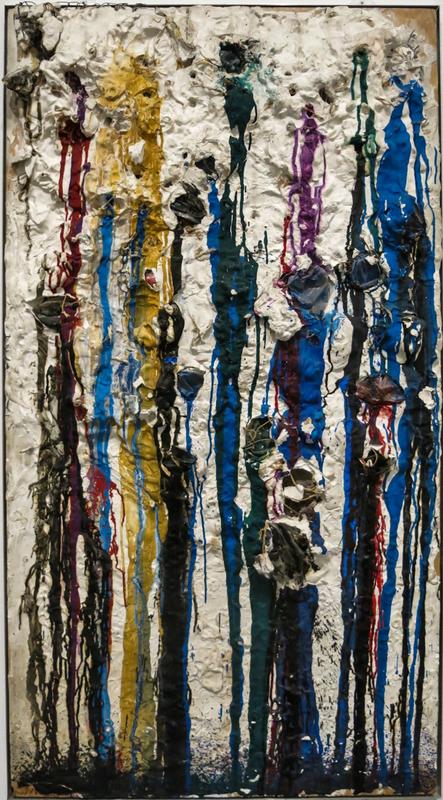
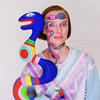
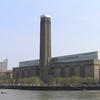
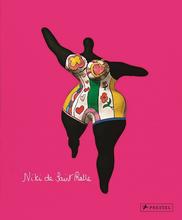








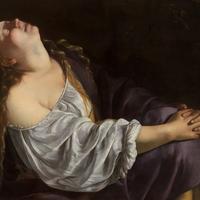
I like this artwork a lot! I love the expression in mixing the mediums of sculpture and painting. I like how both variables help and effect the other. The paint doesn't just effect the sculpture, but the sculpture also effects the paint. Letting the impact of the paint change the surface the paint is on, creates an even more unique drip of the color.